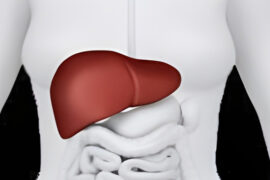This study aimed to investigate the long-term effects of yoga therapy as a supplementary treatment for heart failure, a condition where the heart’s pumping function is impaired, leading to symptoms such as fluid buildup and shortness of breath. The severity of heart failure symptoms was assessed using the New York Heart Association (NYHA) Functional classification system, which categorizes patients based on their physical activity limitations and ejection fraction, a measure of heart pumping efficiency.
The study involved 75 heart failure patients who had previously undergone coronary intervention, revascularization, or device therapy in the six months to one year leading up to the study. All patients were classified as NYHA Class III or lower and had received optimized medical therapy for at least six months to one year. Eligible participants were between 30 and 70 years old, with a left ventricular ejection fraction (LVEF) of 45% or above.
“Yoga is a combination of mind-body techniques, which is a set of physical exercises [asana] with breathing techniques [pranayama], relaxation and meditation that can be effectively used to stimulate physical and mental well-being,” stated Ajit Singh, PhD, research scientist for the Indian Council for Medical Research at Kasturba Medical College & Hospital, Manipal Academy of Heart Education in Manipal, India, and the study’s lead author.
Participants were divided into two groups: the interventional group, comprising 35 individuals (31 males and 4 females), received both yoga therapy and standard guideline-directed medical care, while the non-interventional group, consisting of 40 patients (30 males and 10 females), only received standard guideline-directed medical therapy. The study assessed the impact of yoga therapy on heart failure patients by examining echocardiographic parameters during various follow-up periods.
“Our patients observed improvement in systolic blood pressure and heart rate compared to patients who were on medication without yoga.”
Yoga therapy sessions were conducted at the hospital’s Department of Yoga, where an experienced yoga therapist taught specific yoga techniques, including pranayama (breath control), meditation, and relaxation exercises. Each session lasted approximately 60 minutes, and participants received one week of supervision at the training center before being encouraged to continue self-administered yoga at home. The yoga group was advised to practice yoga at least five days a week for 12 months. While participants learned yoga techniques collectively, individual support was available as needed.
“This study proves that the addition of yoga therapy to standard medical management of heart failure leads to an improvement in left ventricular systolic function and quality of life in heart failure patients,” Singh stated.
Researchers evaluated quality of life improvements using the World Health Organization Quality of Life questionnaire, which assesses physical, psychological, social, and environmental aspects of well-being through 26 questions. Participants completed the questionnaire at enrollment, as well as at 24 and 48 weeks of follow-up. The study revealed that participants in the yoga group experienced improvements in endurance, strength, balance, symptom stability, and overall quality of life. However, there was no observed improvement in social and environmental aspects of health.
“Hence, yoga therapy may improve physical well-being and left ventricular function among heart failure patients on guideline-directed optimal medical therapy.”
Echocardiographic parameters did not exhibit significant differences between the two groups at the outset of the study. However, both the six-month and 12-month follow-ups indicated improved biventricular systolic function in the interventional (yoga) group compared to the non-interventional group. Additionally, the interventional group demonstrated substantial improvements in functional outcomes, as assessed by the NYHA classification.
This study suggests that incorporating yoga therapy as an adjunct treatment for heart failure patients, alongside standard medical care, can lead to improved physical and psychological well-being, as well as enhanced heart function. While the study showed promising results, further research may be warranted to confirm these findings and explore the potential benefits of yoga therapy in heart failure management.
Disclaimer:
The information contained in this article is for educational and informational purposes only and is not intended as a health advice. We would ask you to consult a qualified professional or medical expert to gain additional knowledge before you choose to consume any product or perform any exercise.








